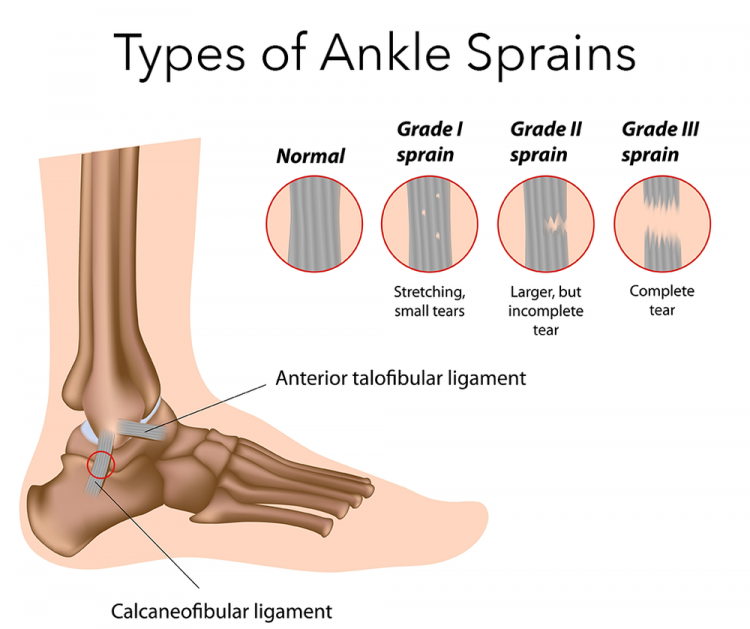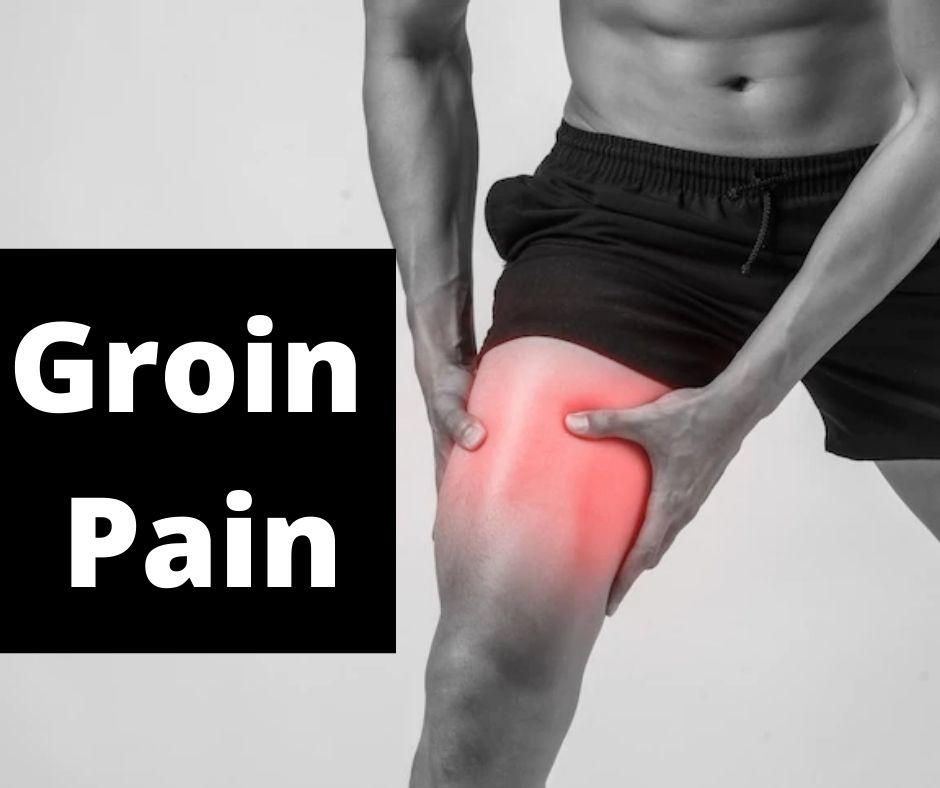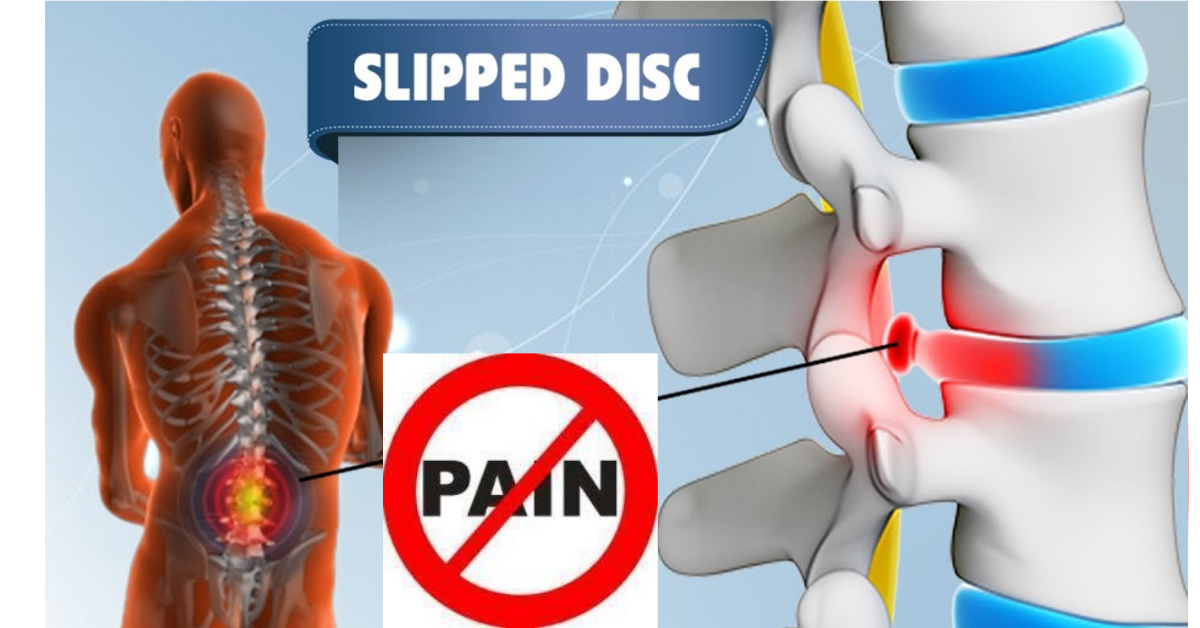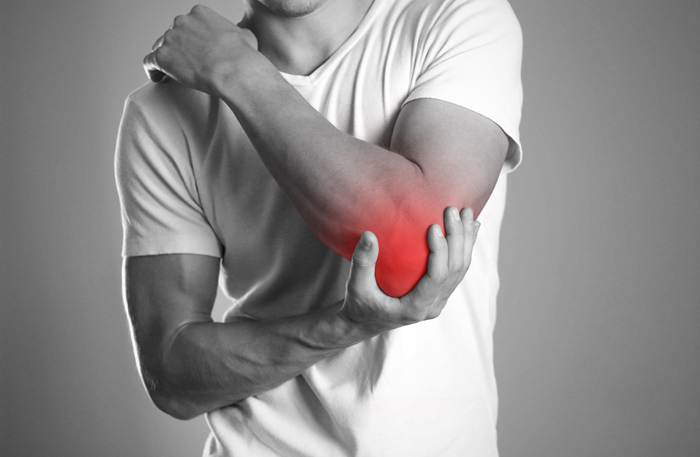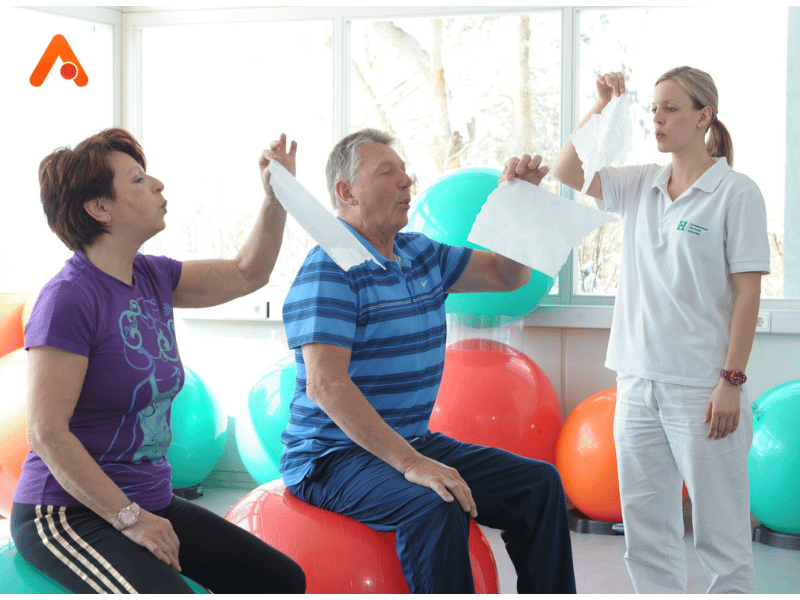Introduction
From a physiotherapy perspective, women’s health issues can encompass a range of conditions such as pelvic pain, urinary incontinence, pelvic organ prolapse, pregnancy-related discomfort, and postpartum recovery. Physiotherapists often work to strengthen pelvic floor muscles, improve posture, and address musculoskeletal concerns specific to women, providing exercises and techniques to enhance overall well-being. It’s essential to consult a qualified physiotherapist for personalized guidance and treatment.
Here are some women’s health conditions that are often addressed from a physiotherapy perspective:
Pelvic Floor Dysfunction:
This includes issues like pelvic pain, urinary incontinence, and pelvic organ prolapse.
What is Pelvic Floor Dysfunction?
Pelvic floor dysfunction refers to a variety of conditions that affect the muscles, ligaments, and connective tissues in the pelvic region. It can lead to issues like urinary or fecal incontinence, pelvic pain, and discomfort during sexual activity.
When you are unable to control the muscles in your pelvic floor, it is called pelvic floor dysfunction.
Pelvic floor dysfunction can also happen as a result of overactive or tight pelvic muscles or underactive or weak pelvic muscles.
Pelvic floor dysfunction is the inability to correctly relax and coordinate your pelvic floor muscles to have a bowel movement.
Pelvic floor dysfunction is a complex and often misunderstood condition that involves the muscles, ligaments, and connective tissues in the pelvic area. These muscles form a supportive hammock-like structure that helps control various bodily functions, including urinary and bowel continence, as well as providing support to the organs in the pelvis, such as the bladder, uterus, and rectum.
There are several different types of pelvic floor dysfunction, each with its own set of symptoms:
- Pelvic Organ Prolapse: This occurs when the pelvic organs (bladder, uterus, rectum) descend and press against the vaginal walls or protrude through the vaginal opening. It can cause a feeling of pressure, discomfort, and even visible bulging.
- Urinary Incontinence: This involves involuntary leakage of urine. Stress incontinence occurs when pressure on the bladder (such as coughing or sneezing) leads to leaks. Urge incontinence, on the other hand, is a sudden strong urge to urinate followed by involuntary leakage.
- Fecal Incontinence: This is the involuntary release of gas or stool. It can be caused by weakened pelvic floor muscles, nerve damage, or other underlying conditions.
- Pelvic Pain: Chronic pelvic pain can result from tense or spasming pelvic floor muscles. This pain can be experienced in the lower abdomen, pelvic region, lower back, or during sexual activity.
- Dyspareunia: This is pain or discomfort during sexual intercourse. It can be caused by muscle tension or irritation of the pelvic floor muscles.
- Coccydynia: This refers to pain around the tailbone (coccyx). It can occur due to trauma, strain, or muscle tension in the pelvic floor area.
Treatment for pelvic floor dysfunction varies depending on the specific condition and its underlying causes. It may include:
Pelvic Floor Physical Therapy: This involves exercises and techniques to strengthen, relax, and coordinate the pelvic floor muscles.
Behavioral Modifications: Techniques to manage and improve bladder and bowel habits.
Medications: In some cases, medications may be prescribed to manage symptoms.
Physiotherapy can be effective in treating pelvic floor dysfunction through exercises that target and strengthen the muscles of the pelvic floor. These exercises, often referred to as Kegel exercises, help improve muscle control and coordination, which can alleviate issues like urinary incontinence, pelvic pain, and other related problems. It’s important to consult a trained physiotherapist who can provide personalized guidance and create a tailored exercise plan based on your specific needs and condition.
Prenatal and Postpartum Care:
Physiotherapy can help manage discomfort during pregnancy and aid in postpartum recovery.
Physiotherapy plays a crucial role in both prenatal and postpartum care. During pregnancy, physiotherapists can help women maintain their physical well-being, manage discomfort, and prepare for childbirth through exercises that focus on posture, pelvic floor strengthening, and overall body support.
Here’s an overview of both phases:
Prenatal Care:
- Pain Management: Physiotherapists can address common discomforts like lower back pain, pelvic girdle pain, and sciatica through exercises, stretches, and manual therapy.
- Posture Correction: They guide women on maintaining proper posture to alleviate strain on the spine and muscles.
- Breathing Exercises: Breathing techniques are taught to prepare for labor and enhance oxygen intake.
- Core Strengthening: Gentle core exercises are prescribed to support the growing belly, improving stability and reducing the risk of diastasis recti (abdominal muscle separation).
- Pelvic Floor Exercises: These exercises promote pelvic floor strength, which is essential for labor and to prevent incontinence postpartum.
- Educational Workshops: Physiotherapists often conduct sessions to educate women about labor, pain management techniques, and exercises to facilitate an easier birth process.
Postpartum Care:
- Pelvic Floor Rehabilitation: Physiotherapists guide women through pelvic floor exercises to regain strength, treat any incontinence issues, and support post-birth recovery.
- Diastasis Recti Management: Tailored exercises help close the abdominal separation that can occur during pregnancy.
- Core Restoration: Gradual core-strengthening exercises are prescribed to regain abdominal strength while considering the changes the body has undergone.
- Scar Tissue Management: If a cesarean section was performed, physiotherapists can use manual techniques to address scar tissue tightness and discomfort.
- Functional Movement: Therapists work on restoring normal movement patterns, helping with day-to-day activities and preventing musculoskeletal issues.
- Stress Reduction: Relaxation techniques and breathing exercises can help manage stress and promote overall well-being.
- Breastfeeding Posture: Proper positioning during breastfeeding is taught to prevent strain on the neck, shoulders, and back.
- Return to Exercise: Gradual introduction of exercise, in consultation with healthcare providers, helps women safely resume physical activity.
Both prenatal and postpartum care involve personalized assessments and treatments, addressing each woman’s unique needs. It’s important to consult a physiotherapist who specializes in women’s health to receive the most effective care.
Postpartum, physiotherapy can aid in the recovery process. It often involves pelvic floor muscle exercises to help with muscle tone, healing, and addressing issues like urinary incontinence. Additionally, physiotherapists may provide guidance on safe and gradual return to exercise and activity after childbirth.
It’s recommended to consult a qualified physiotherapist who specializes in prenatal and postpartum care to receive personalized advice and exercises tailored to your specific needs and circumstances.
Diastasis Recti:
Separation of abdominal muscles after pregnancy that can be treated through specific exercises.
Diastasis recti is a condition characterized by the separation of the left and right sides of the rectus abdominis muscle, which is the muscle that covers the front surface of the abdomen. This separation can occur during pregnancy or due to factors like rapid weight gain, intense abdominal exercises, or genetics. It’s more common in women, especially after pregnancy.
The separation is usually caused by the stretching of the connective tissue (linea alba) that runs down the center of the abdomen. This can lead to a visible bulge or a ridge that runs vertically along the midline of the abdomen, particularly when the person performs certain movements.
Diastasis recti can result in a variety of symptoms, including lower back pain, pelvic floor issues, and weaker core muscles. However, not everyone with diastasis recti experiences discomfort or complications.
Treatment often involves exercises aimed at strengthening the deep abdominal muscles and the pelvic floor. Physical therapists or specialized trainers can guide individuals in performing these exercises correctly. In some cases, surgery might be considered if the separation is severe and causing significant problems.
Physiotherapy can be beneficial for Diastasis Recti, which is a separation of the abdominal muscles often experienced by pregnant women or after childbirth. A physiotherapist can guide you through exercises to strengthen your core muscles and help close the gap. It’s important to consult a healthcare professional for a personalized treatment plan based on your specific situation.
Lymphedema:
Swelling often experienced after lymph node removal during breast cancer treatment.
Lymphedema is a chronic medical condition characterized by the accumulation of lymphatic fluid in tissues, leading to swelling and discomfort. It typically occurs when the lymphatic system, responsible for maintaining fluid balance and immune function, is compromised. This can happen due to various reasons:
- Primary Lymphedema: This is caused by congenital malformations in the lymphatic system, resulting in its inadequate development. It might become noticeable during childhood or later in life.
- Secondary Lymphedema: This is more common and results from damage to the lymphatic system due to surgery, radiation therapy (commonly for cancer treatment), trauma, infection, or other medical conditions.
The key features of lymphedema are:
Swelling: The accumulation of lymphatic fluid leads to swelling, which can affect different body parts, such as limbs, face, neck, or genital areas.
Discomfort and Pain: The swelling can cause discomfort, heaviness, and pain. Skin might feel tight or stretched.
Reduced Function: Swelling can hinder the normal function of the affected body part. For example, if it’s in the arm, it might limit movement.
Skin Changes: The skin over the affected area might become thicker, harder, or develop infections more easily.Risk of Infections: The stagnant lymphatic fluid can provide a breeding ground for bacteria, leading to recurring infections.
Managing lymphedema involves a multi-faceted approach:
- Compression Therapy: Wearing compression garments helps reduce swelling by promoting the flow of lymphatic fluid.
- Manual Lymphatic Drainage: This specialized massage technique aids in directing lymphatic fluid toward functioning lymph nodes.
- Exercise: Gentle, controlled exercises can improve lymphatic flow and muscle pumping action, reducing swelling.
- Skin Care: Maintaining good skin hygiene and avoiding cuts or wounds is crucial to prevent infections.
- Medications: In some cases, diuretics or antibiotics might be prescribed to manage symptoms or treat infections.
- Lifestyle Changes: Maintaining a healthy weight, avoiding tight clothing, and practicing good skin hygiene are important.
Lymphedema is a chronic condition, meaning there’s no complete cure. However, proper management can significantly improve symptoms and quality of life.
Physiotherapy can play a vital role in managing lymphedema, a condition characterized by swelling due to a compromised lymphatic system. A physiotherapist can help through techniques like manual lymphatic drainage, compression therapy, exercises, and skin care. These approaches can aid in reducing swelling, improving circulation, and enhancing overall quality of life. It’s crucial to consult a physiotherapist experienced in lymphedema management to receive appropriate guidance and treatment.
Osteoporosis:
Osteoporosis is a medical condition characterized by weakened bones that are more susceptible to fractures. It occurs when the body loses too much bone, makes too little bone, or both. The bone mineral density (BMD) decreases, resulting in a porous and brittle bone structure.
This condition often develops gradually and might not show noticeable symptoms until a fracture occurs. Risk factors include age, gender (women are more prone), genetics, hormonal changes (menopause), low calcium and vitamin D intake, sedentary lifestyle, smoking, excessive alcohol consumption, and certain medications.
Diagnosis is typically done through bone density scans like DXA (dual-energy X-ray absorptiometry). Treatment involves a combination of lifestyle changes (exercise, balanced diet, vitamin D and calcium supplementation), medications to slow bone loss and improve bone strength, and fall prevention strategies to reduce fracture risk.
It’s important to note that early detection, preventive measures, and a holistic approach to managing osteoporosis can help maintain bone health and reduce the impact of the condition.
Physiotherapy can help with exercises to improve bone strength and balance.
Physiotherapy can be beneficial for women with osteoporosis.
A physiotherapist can design a safe and effective exercise program that focuses on weight-bearing and resistance exercises to help improve bone density, balance, and muscle strength. These exercises can reduce the risk of fractures and improve overall bone health. However, it’s essential to work with a healthcare professional who can tailor the exercises to your specific needs and monitor your progress to ensure safety and effectiveness.
Endometriosis:
Endometriosis is a chronic medical condition in which tissue similar to the lining of the uterus, called the endometrium, grows outside the uterus. This tissue can be found on organs such as the ovaries, fallopian tubes, and the lining of the pelvis. During a woman’s menstrual cycle, this tissue can become inflamed, bleed, and cause pain.
Common symptoms of endometriosis include pelvic pain, painful periods, pain during intercourse, and infertility. However, the severity of symptoms can vary widely among individuals.
The exact cause of endometriosis is not fully understood, but there are several theories, including retrograde menstruation (when menstrual blood flows back into the pelvis), genetic predisposition, and immune system factors.
Diagnosis often involves a combination of medical history, pelvic exams, and imaging tests like ultrasounds or MRI. The only definitive way to diagnose endometriosis is through laparoscopic surgery, where a small camera is inserted into the abdomen to visualize and potentially remove the tissue.
Treatment options include pain management through medications, hormonal therapies to control menstrual cycles, and surgical removal of the endometrial tissue. In severe cases, a hysterectomy (removal of the uterus) might be considered.
Endometriosis can significantly impact a person’s quality of life, and management often involves a multidisciplinary approach involving gynecologists,
Pain management techniques and exercises to alleviate symptoms.
Physiotherapy can be a valuable part of a comprehensive approach to managing endometriosis symptoms. Physiotherapists can assist with pain management through techniques like pelvic floor muscle exercises, relaxation techniques, and postural adjustments. Additionally, they can provide guidance on maintaining mobility and managing any musculoskeletal issues that may arise due to the condition. Collaborating with a physiotherapist experienced in pelvic health can help address the unique challenges associated with endometriosis and improve your overall quality of life.
Menopause-related Issues:
Addressing bone density loss, muscle mass reduction, and joint pain through exercise and education.
Menopause is a natural biological process that marks the end of a woman’s reproductive years. It typically occurs in their late 40s to early 50s, with an average age of 51. During menopause, a woman’s ovaries gradually produce fewer hormones like estrogen and progesterone, leading to several physical and emotional changes.
Common menopause-related issues include:
- Hot Flashes: Sudden waves of intense heat and sweating, often accompanied by a rapid heartbeat and flushed skin.
- Night Sweats: Similar to hot flashes but occurring during sleep, causing excessive sweating that can disrupt sleep.
- Vaginal Changes: Reduced estrogen levels can lead to vaginal dryness, itching, and discomfort during intercourse, known as dyspareunia.
- Mood Swings: Hormonal fluctuations can contribute to mood changes, including irritability, anxiety, and depression.
- Sleep Problems: Insomnia or disrupted sleep patterns are common due to hormonal changes and night sweats.
- Changes in Libido: Decreased estrogen levels might lead to a reduced interest in sexual activity.
- Bone Health: Lower estrogen levels increase the risk of osteoporosis, a condition that weakens bones and makes them more prone to fractures.
- Urinary Symptoms: Some women may experience urinary incontinence or more frequent urinary tract infections due to changes in pelvic tissues.
- Weight Gain: Hormonal changes can make it easier to gain weight, particularly around the abdomen.
- Memory and Concentration: Some women report difficulty with memory, concentration, and cognitive function during menopause.
- Cardiovascular Health: Estrogen has a protective effect on the cardiovascular system, so its decline during menopause may increase the risk of heart disease and high blood pressure.
Managing menopause-related issues involves various approaches:
Lifestyle Changes: Regular exercise, a balanced diet rich in calcium and vitamin D, and stress reduction techniques can help alleviate symptoms.
Hormone Therapy: Hormone replacement therapy (HRT) can be used to manage severe symptoms, but it comes with risks and benefits that should be discussed with a healthcare provider.
Vaginal Lubricants: Over-the-counter or prescription vaginal lubricants or moisturizers can help with vaginal dryness.
Medications: Antidepressants, anti-anxiety drugs, or certain blood pressure medications might help manage mood swings, hot flashes, and sleep problems.
Physiotherapy can be beneficial for addressing menopause-related problems. It can help manage symptoms like joint pain, muscle stiffness, and decreased bone density through exercises that improve flexibility, strength, and balance. Additionally, pelvic floor exercises can aid in managing urinary incontinence, a common issue during menopause. Consulting a physiotherapist will allow you to receive personalized guidance and exercises tailored to your specific needs.
Breast Cancer Rehabilitation:
Assisting in restoring shoulder mobility and strength post-surgery.
Breast cancer rehabilitation is a comprehensive approach to help individuals recover physically and emotionally after breast cancer diagnosis and treatment. It aims to improve the quality of life, restore functionality, and promote overall well-being. Here are the key aspects of breast cancer rehabilitation:
- Physical Therapy: This focuses on regaining strength, flexibility, and mobility in the affected areas. Exercises may include range-of-motion exercises, strength training, and lymphedema management to prevent swelling in the arm and chest.
- Lymphedema Management: Lymphedema is a common side effect of breast cancer treatment, causing fluid buildup and swelling. Techniques such as manual lymphatic drainage, compression therapy, and exercises help manage and reduce lymphedema symptoms.
- Pain Management: Addressing pain resulting from surgery, radiation, or other treatments is crucial. Pain management strategies can include medications, physical therapy, and alternative therapies like acupuncture.
- Psychosocial Support: Emotional well-being is essential in the recovery process. Support groups, counseling, and therapy can help individuals cope with anxiety, depression, and body image issues.
- Scar Management: Surgical scars and tissue changes can affect body image and mobility. Techniques such as scar massage and silicone sheets can help minimize discomfort and improve appearance.
- Exercise Programs: Tailored exercise programs improve cardiovascular health, boost energy levels, and reduce fatigue. It’s important to consult with healthcare professionals before starting any exercise regimen.
- Nutritional Guidance: Proper nutrition plays a crucial role in recovery. Dietitians can offer guidance to maintain a healthy weight, support the immune system, and manage treatment-related side effects.
- Counseling and Therapy: Dealing with the emotional impact of breast cancer is important. Psychologists and counselors can help individuals navigate anxiety, depression, and adjustment to life post-treatment.
- Cognitive Rehabilitation: Some individuals may experience cognitive changes due to chemotherapy, known as “chemobrain.” Cognitive rehabilitation programs help address memory and concentration issues.
- Sexual Health Support: Breast cancer and its treatment can affect sexual health and intimacy. Healthcare professionals can offer guidance on managing these challenges and maintaining healthy relationships.
Breast cancer physiotherapy rehabilitation focuses on helping individuals regain strength, mobility, and function after undergoing breast cancer treatments such as surgery, radiation, and chemotherapy. Physiotherapy can help alleviate post-surgical discomfort, restore range of motion in the shoulder and arm, and address issues like lymphedema through specialized exercises and techniques. A physiotherapist will develop a personalized rehabilitation plan to improve quality of life and aid in the recovery process.
Vulvodynia and Vaginismus:
-
Vulvodynia:
Vulvodynia is a condition characterized by chronic, unexplained pain in the vulvar area (the external female genitalia). The pain can be described as burning, stinging, rawness, or soreness. It can occur spontaneously or be triggered by touch, pressure, or sexual activity. The exact cause of vulvodynia is not well understood, but it’s thought to involve a combination of factors including nerve hypersensitivity, hormonal changes, muscle tension, and inflammation. Diagnosis is typically made through excluding other possible causes of the pain and assessing symptoms. Treatment options include topical creams, medications, physical therapy, and counseling.
-
Vaginismus:
Vaginismus is a condition where there is involuntary muscle spasm or contraction of the muscles around the vagina, making penetration difficult or impossible. This can result in pain, discomfort, and anxiety related to any attempt at vaginal penetration, including intercourse and even medical exams. The exact cause of vaginismus can vary and may involve physical, psychological, or emotional factors. It’s often categorized into primary vaginismus (lifelong) and secondary vaginismus (develops after a period of pain-free intercourse). Treatment can involve a combination of physical therapy, dilators, counseling, and sometimes medications. Addressing any underlying psychological or emotional factors is also important.
Both Vulvodynia and Vaginismus can have a significant impact on a person’s quality of life, relationships, and mental well-being. If someone is experiencing symptoms of either condition, it’s important to seek medical advice and consultation with a healthcare provider specializing in women’s health or sexual health.
Pelvic pain conditions that can benefit from physiotherapy techniques.
Physiotherapy can play a significant role in treating vulvodynia and vaginismus. For vulvodynia, physiotherapists may use techniques like pelvic floor relaxation exercises, desensitization, and manual therapy to alleviate pain and discomfort in the vulvar region. In the case of vaginismus, physiotherapy can involve pelvic floor muscle relaxation exercises, gradual dilation techniques, and counseling to address any psychological factors contributing to the condition. A qualified physiotherapist with experience in pelvic health can create a tailored treatment plan to help manage these conditions effectively.
Menstrual Pain and Discomfort:
Menstrual pains, also known as dysmenorrhea, are common discomforts experienced by many people with menstrual cycles. They can vary in intensity and duration, but generally occur around the time of menstruation. There are two main types:
- Primary Dysmenorrhea: This is the more common type and is caused by natural uterine contractions that help shed the uterine lining. The contractions can cause pain in the lower abdomen, back, and thighs. Other symptoms may include nausea, diarrhea, fatigue, and headaches. These symptoms usually begin a day or two before menstruation and last for a few days.
- Secondary Dysmenorrhea: This type is typically associated with an underlying medical condition, such as endometriosis, fibroids, pelvic inflammatory disease, or adenomyosis. The pain with secondary dysmenorrhea is often more severe and may not always be limited to the menstrual period.
Managing menstrual pain involves a combination of approaches, including over-the-counter pain relievers (NSAIDs like ibuprofen), Meftal-Spas , applying heat to the abdomen, regular exercise, relaxation techniques, and maintaining a healthy diet. For severe cases, consulting a healthcare provider is advisable to rule out any underlying conditions and explore additional treatment options.
Physical therapy can offer relief through stretches and exercises.
Physiotherapy can offer relief for menstrual pain and discomfort through various approaches. Techniques such as gentle stretches, pelvic floor exercises, and relaxation techniques can help alleviate muscle tension and reduce cramping. Heat therapy and specific exercises can also target lower back pain commonly associated with menstruation. A physiotherapist can design a personalized program to address your specific symptoms and provide strategies to manage menstrual discomfort effectively.
Polycystic Ovary Syndrome (PCOS):
PCOS stands for Polycystic Ovary Syndrome. It’s a hormonal disorder that affects people with ovaries, often causing irregular periods, excess androgen (male hormones) levels, and cysts on the ovaries. It can lead to various symptoms such as acne, weight gain, and fertility issues. It’s a common condition, and while there’s no cure, there are treatments to manage its effects. If you suspect you have PCOS, it’s best to consult a healthcare professional for proper diagnosis and guidance.
It’s characterized by a combination of symptoms, but not all individuals with PCOS will experience the same ones. Some common features include:
- Irregular Menstrual Cycle: People with PCOS might have irregular, infrequent, or even absent periods due to the lack of regular ovulation.
- Hyperandrogenism: Elevated levels of male hormones (androgens) can lead to symptoms like excess facial or body hair (hirsutism), acne, and sometimes male-pattern baldness.
- Polycystic Ovaries: The ovaries might contain multiple small cysts, although the term “cysts” here is somewhat misleading. These are actually follicles that haven’t matured properly, rather than traditional cysts.
- Insulin Resistance: Many individuals with PCOS have insulin resistance, which can lead to higher levels of insulin in the body. This can contribute to weight gain and difficulty losing weight.
- Metabolic Issues: Due to insulin resistance and other factors, there’s an increased risk of developing type 2 diabetes, high blood pressure, and other metabolic problems.
The exact cause of PCOS isn’t fully understood, but it’s believed to be influenced by genetics and environmental factors. Diagnosis usually involves a combination of symptoms, medical history, and physical exams, often supported by blood tests to check hormone levels.
Treatment approaches depend on the individual’s symptoms and goals. They may include lifestyle changes (such as weight management and regular exercise), medications to regulate menstrual cycles or reduce androgen levels, and sometimes fertility treatments for those trying to conceive.
It’s important to note that PCOS is a spectrum disorder, meaning symptoms can vary widely among individuals. Regular medical check-ups and open communication with healthcare professionals are crucial for managing PCOS effectively.
Managing weight and metabolic issues through exercise.
Physiotherapy can be a supportive approach in managing some aspects of Polycystic Ovary Syndrome (PCOS). While it can’t directly treat the hormonal imbalance underlying PCOS, physiotherapy can help address related issues such as weight management, insulin sensitivity, and improving overall well-being.
Physiotherapists can develop exercise programs that promote weight loss, enhance cardiovascular health, and regulate blood sugar levels. Additionally, they may use relaxation techniques to manage stress, which can contribute to hormonal imbalances. Consult a physiotherapist experienced in women’s health to create a comprehensive plan tailored to your needs and PCOS symptoms.
Osteoarthritis:
Osteoarthritis is a common degenerative joint disease that can affect anyone, but it’s more prevalent among women, especially as they age. It occurs when the protective cartilage that cushions the ends of bones wears down over time, leading to pain, stiffness, and reduced joint mobility.
The exact cause of osteoarthritis isn’t fully understood, but several factors contribute to its development. These include genetics, joint injury or overuse, obesity, and hormonal changes. Estrogen, in particular, has been suggested to play a role in the increased prevalence of osteoarthritis in women, especially after menopause when estrogen levels decline.
Women tend to experience osteoarthritis more frequently in certain joints, such as the knees, hips, hands, and spine. This could be due to differences in anatomy, joint mechanics, and hormonal influences. Estrogen is thought to have protective effects on cartilage, and its decline after menopause might contribute to the accelerated breakdown of cartilage in women.
Preventive measures for osteoarthritis include maintaining a healthy weight, staying physically active to keep joints mobile, and avoiding joint injuries. Treatment options range from pain management through medications, physical therapy, and lifestyle modifications, to more advanced interventions like joint injections or surgical procedures in severe cases.
Regular check-ups, early diagnosis, and appropriate management can help women with osteoarthritis lead healthier and more comfortable lives.
Physiotherapy can help in maintaining joint mobility and function.
Physiotherapy is an effective approach for managing osteoarthritis in women. Physiotherapists can design exercise programs that focus on improving joint flexibility, strengthening muscles around affected joints, and enhancing overall mobility. Low-impact exercises, such as swimming and cycling, can help reduce stress on the joints while promoting cardiovascular fitness.
Manual therapy techniques, such as gentle joint mobilizations and soft tissue massage, can alleviate pain and stiffness. Additionally, education on proper body mechanics and posture can help prevent further joint damage. A physiotherapist experienced in treating osteoarthritis can create a personalized treatment plan to improve your joint function, reduce pain, and enhance your quality of life.
Urinary Incontinence:
Urinary incontinence is the involuntary leakage of urine, and it’s more common in women due to factors like pregnancy, childbirth, and menopause. There are several types:
- Stress incontinence: This occurs when pressure on the bladder increases, causing leakage. It’s often triggered by actions like laughing, sneezing, or exercising.
- Urge incontinence: Also known as “overactive bladder,” this involves a sudden, intense urge to urinate followed by involuntary leakage. It can be caused by bladder muscle spasms.
- Overflow incontinence: This occurs when the bladder doesn’t empty completely, causing it to overflow and lead to leakage.
- Functional incontinence: Physical or cognitive limitations prevent a person from reaching the bathroom in time, leading to leakage.
- Mixed incontinence: A combination of two or more types, usually stress and urge incontinence.
Causes can vary:
Pregnancy and childbirth: Can weaken pelvic floor muscles and damage nerves controlling the bladder.
Menopause: Decreased estrogen levels can weaken the urethral tissues.
Aging: Muscles supporting the bladder and urethra weaken over time.
Obesity: Excess weight can put pressure on the bladder and surrounding muscles.
Certain medical conditions: Diabetes, multiple sclerosis, and others can affect nerve function.
Medications: Some drugs can contribute to incontinence.
Urinary tract infections: Can lead to temporary incontinence.
High-impact activities: Such as running, can weaken pelvic floor muscles.
Treatment options include lifestyle changes (diet, weight management, pelvic floor exercises), medications to relax the bladder or strengthen the urethral sphincter, and in severe cases, surgical interventions.
Strengthening pelvic floor muscles to improve bladder control.
Physiotherapy can be very effective in treating urinary incontinence. A physiotherapist with expertise in pelvic health can help by providing exercises to strengthen the pelvic floor muscles, which play a crucial role in bladder control. These exercises are often referred to as “Kegel exercises.”
Pelvic floor muscle training can help improve muscle tone and support the bladder and other pelvic organs. Additionally, physiotherapists may use biofeedback techniques to help you better understand and engage these muscles correctly.
Behavioral strategies, such as fluid management and timed voiding, may also be incorporated into your treatment plan. The specific approach will depend on the type and severity of urinary incontinence you’re experiencing. Consulting a physiotherapist experienced in pelvic health will help you develop a personalized plan to manage and improve urinary incontinence.
“At Arunalaya Healthcare, we pride ourselves on being the best physiotherapy center in Delhi. Our dedicated team of experts offers top-notch physiotherapy treatment tailored to your needs. Experience the difference with the leading physiotherapy clinic in Delhi area. Our commitment to excellence ensures that you receive the best physiotherapy care possible. Trust Arunalaya Healthcare for the best physiotherapy treatment in Delhi. Our advanced physiotherapy solutions set us apart as the premier choice for your rehabilitation needs. When it comes to physiotherapy, our center stands out as the best in Delhi. Choose Arunalaya Healthcare for comprehensive physiotherapy solutions that deliver results. Visit Arunalaya Healthcare today and discover why we are the best physiotherapy center in Delhi.”

